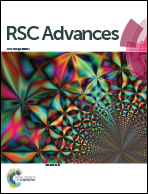Doubly dual nature of ammonium-based ionic liquids for methane hydrates probed by rocking-rig assembly
Abstract
This work presents a systematic study of methane hydrate inhibition in the presence of five structurally variable ionic liquids (ILs) belonging to the ammonium family—viz., tetra-alkylammonium acetate (TMAA), choline butyrate (Ch-But), choline iso-butyrate (Ch-iB), choline hexanoate (Ch-Hex) and choline octanoate (Ch-Oct). For this purpose, hydrate equilibrium curves have been obtained for methane in pure water and in 1 and 5 wt% aqueous solutions of ILs using a rocking cell apparatus (RC-5). Thermodynamic hydrate inhibition and promotion efficiency in each IL has been thoroughly investigated by observing the shifts in the hydrate equilibrium curves and trends of the calculated hydrate suppression temperatures (ΔT). The results were also obtained for methanol to validate the apparatus and compare the inhibition efficiency of ILs. Molar hydrate dissociation enthalpies (ΔHdiss) were obtained for the studied systems using the Clausius–Clapeyron equation and showed that ILs do not participate in forming the hydrate cages. The induction time (tind) data reveal that some of the studied ILs delay the time of hydrate formation, thereby indicating a potential kinetic inhibitor effect. The tested ILs exhibited a variety of phenomena, such as hydrate inhibition, hydrate stabilization, kinetic effect and surfactant-like behavior, which emphasize the use of ILs as potential gas hydrate inhibitors.


 Please wait while we load your content...
Please wait while we load your content...